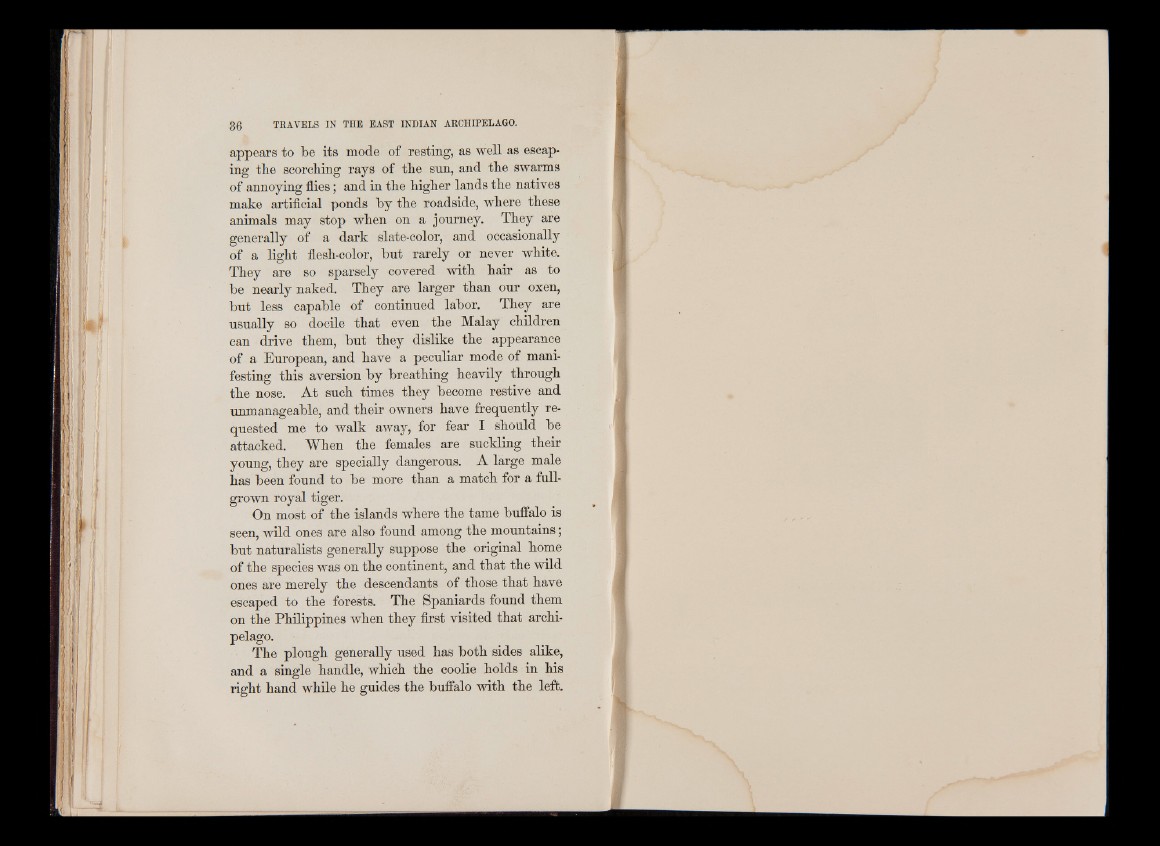
appears to be its mode of resting, as well as escaping
tbe scorching rays of the sun, and the swarms
of annoying flies; and in the higher lands the natives
make artificial ponds by the roadside, where these
animals may stop when on a journey. They are
generally of a dark slate-color, and occasionally
of a light flesh-color, but rarely or never white.
They are so sparsely covered with hair as to
be nearly naked. They are larger than our oxen,
but less capable of continued labor. They are
usually so docile that even the Malay children
can drive them, but they dislike the appearance
of a European, and have a peculiar mode of manifesting
this aversion by breathing heavily through
the nose. At such times they become restive and
unmanageable, and their owners have frequently requested
me to walk away, for fear I should be
attacked. When the females are suckling their
young, they are specially dangerous. A large male
has been found to be more than a match for a fall-
grown royal tiger.
On most of the islands where the tame buffalo is
seen, wild ones are also found among the mountains;
but naturalists generally suppose the original home
of the species was on the continent, and that the wild
ones are merely the descendants of those that have
escaped to the forests. The Spaniards found them
on the Philippines when they first visited that archipelago.
The plough generally used has both sides alike,
and a single handle, which the coolie holds in his
right hand while he guides the buffalo with the left.